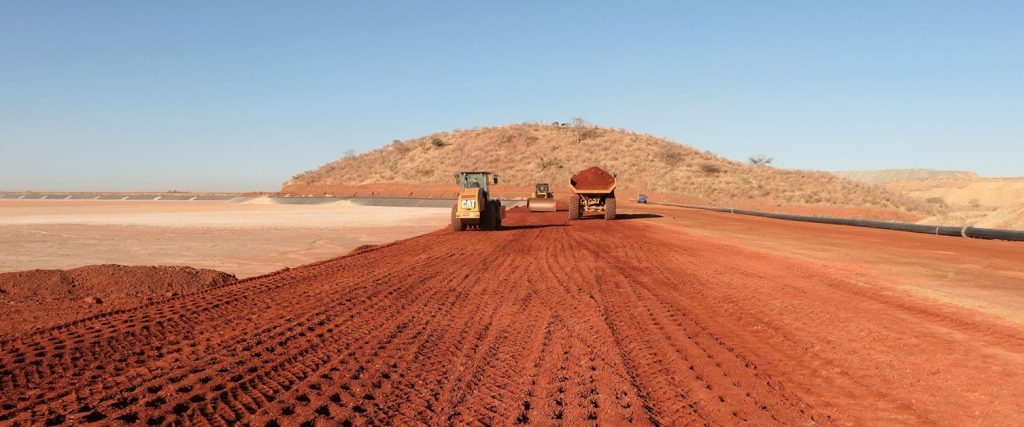Potential applications of mine waste rock and tailings

The damage to the environment caused by mining and the depletion of earth resources have led people to pay more and more attention to the treatment and resource utilization of solid waste in mines. There is a saying that tailings are resources placed in the wrong place. If they are used well, they are gold!
1. Used to produce sand and gravel aggregates
Sand and gravel aggregates are the largest, indispensable and irreplaceable basic materials for the construction of infrastructure projects such as buildings, roads and bridges. In the long-term mining and production process, mines produce a large amount of waste rock and tailings. The use of these tailings resources can completely replace or partially replace sand and gravel aggregates.
2. Used to produce fine aggregates for concrete
When using tailings as fine aggregates for concrete, the same requirements for coarse and medium aggregates should also be considered. Generally speaking, tailings sand is better than sea sand or river sand, because sea sand often “contains salt and chloride ions, which can easily cause steel bars to rust, and the tailings have a rough surface and are angular, which can increase the strength of concrete.
3. Used in the production of prefabricated component admixtures
Studies have shown that in the production of vibration-free self-compacting precast concrete components, limestone powder can effectively improve the fluidity and resistance to separation of concrete, and has a significant effect on concrete molding, solving problems such as insufficient raw materials. In addition to the above-mentioned limestone powder, dolomite and granite powder with properties similar to limestone can also be used as admixtures for concrete and cement.
4. Used in the production of heavy calcium carbonate
Heavy calcium carbonate is mainly made of calcite and dolomite as the main raw materials, and its requirements are high purity, low iron content, no sulfur, and harmless to the human body. The waste rock of some deposits The fragments of large calcite veins or dolomite veins or pure marble and dolomite can be selected from the waste rock as this raw material.
5. Used to produce stone powder for desulfurization
Currently, limestone desulfurization is the main method for flue gas desulfurization in power plants in my country because of its mature technology and stable operation. The limestone powder produced in the processing of sand and gravel mines can be further ground and processed to effectively reduce the cost of the desulfurization process in power plants, providing a good market for turning tailings limestone powder into treasure.
6. Used to produce light calcium carbonate
Papermaking white mud, carbide slag, phosphogypsum, alkali slag, etc. contain a large amount of calcium hydroxide or calcium oxide, which can be used as raw materials for the production of light calcium carbonate.
7. Used to produce calcined kaolin
Kaolin is an important component of coal gangue. Coal gangue is purified, ultra-finely crushed, calcined and surface modified. Fine processing technologies such as calcined kaolin can produce ultrafine calcined kaolin, which can be used as coating pigments and fillers in papermaking, as fillers and extenders in plastics, rubber, aerospace, wires and cables, coatings, inks, food additives, cosmetics, pesticides and other fields, and can also be used as a raw material for the production of ceramic industry and heat-resistant high-temperature pottery.
8. Used as glass raw materials
It is a well-known fact that some high-silicon tailings, such as gold tailings, tungsten tailings, kaolin tailings and some tailings rich in potassium feldspar, can be used as raw materials for glass. However, if the iron content in the tailings is high, it cannot be used as a raw material for flat glass, but can only be used as a raw material for colored bottle glass.
9. Used as a raw material for the production of mineral polymers
Mineral polymers, also known as geopolymers, are newly developed in recent years. Alkali-activated cementitious materials can replace cement in many occasions. Compared with cement production, energy consumption can be reduced by 70% and pollutant emissions can be reduced by about 90%. At the same time, it has high flexural strength, corrosion resistance, high temperature resistance, heat insulation and better volume stability, especially excellent performance in preventing heavy metals from dissolving from structures.
10. Materials for direct degradation of heavy metals in sewage treatment
Sweden was the first to use mine tailings for sewage treatment. As early as more than 30 years ago, Sweden had used tailings from two beneficiation plants, Boliden and Kristinbe, to purify acidic sewage and urban sewage.
The principle of tailings purifying sewage is: when tailings mud is added to urban sewage, the mud can adsorb heavy metal ions on the surface of the tailings, forming a precipitate that is separated from the water, and it is more sufficient than the general hydroxide adsorption and separation. Studies have shown that if the adsorption is a pure surface combination, then each ton of tailings can adsorb several pounds of metal; if it can also react chemically, such as pyrrhotite chemically reacts with mercury ions, then each ton of tailings can absorb hundreds of pounds of metal.
